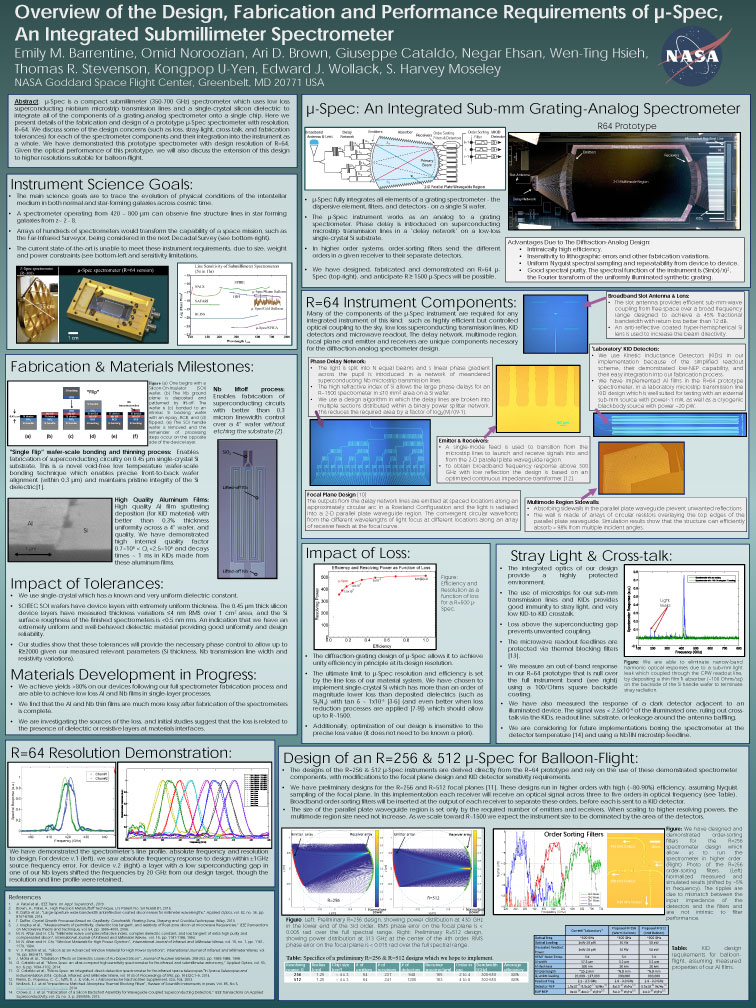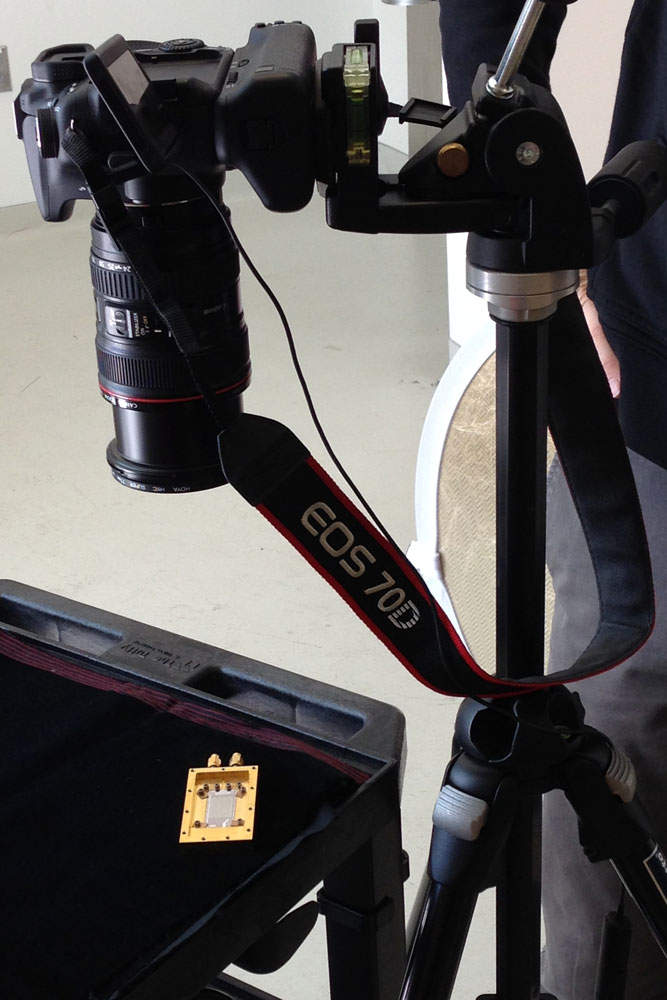

In February, 2015, I was approached by colleagues at NASA/GSFC asking me to photograph a small piece of instrumentation they were developing. The spectrometer was quite small, being in a brass enclosure maybe 1.5x3 inches, but with a lot of tiny circuit details that they wanted recorded. There was also the question of getting reasonably bright, even lighting.
In the end, we set up the device on a piece of black velour cloth (basically non-reflective) on a cart, with the camera positioned directly over it on a tripod. (This was meant to easily eliminate parallax issues.) The cart was located in a hallway with a window (but not in direct sunlight) for fairly bright lighting as opposed to the windowless lab.
We used a telephoto zoom lens (whose normal closest focus point is 3.9 feet) with a set of three extension tubes. (Extension tubes are simply, indeed, tubes (just air, no optics) that place a connected lens farther from the camera focal plane, thus greatly increasing magnification. After some experimentation, we used all three tubes in the set plus the telephoto lens at a working distance (distance from object to the front of the lens) of about a foot (see photo below).
(The "working distance" was too small for a shorter wide-to-short-telephoto (24-105mm) zoom lens. Either one had a working distance of only an inch or two or else the amount of magnification of the image was too little. (If the object is too close to the lens, then it is really hard to light the object evenly, because the lens' shadow intervenes!)
Shown below is the top of one page of a scientific funding proposal (the rest of which is not available for public dissemination) and a reduced version of a 3x4 foot poster about the project.



full resolution image
(6.7MB, 5373x3582 pixels (19.2MP, cropped from 20MP original))
Click mouse-as-magnifying-glass on that image to see zoomed in view.
Two setup shots, one showing the white telephoto lens used in the above shot, but with the dust cover on top of the spectrometer. The other shot shows the black 24-105 lens with the exposed spectrometer.


One other interesting aspect to this. There was a surprising amount of dust (and a few reflections) shown on this device (since it was not being photographed in a clean room), that required zooming into about 600% in Photoshop in order to do pixel-level dust-removal.
Here is the same image as seen above with and without dust.
(Roll the mouse over the image to see the before and after images).